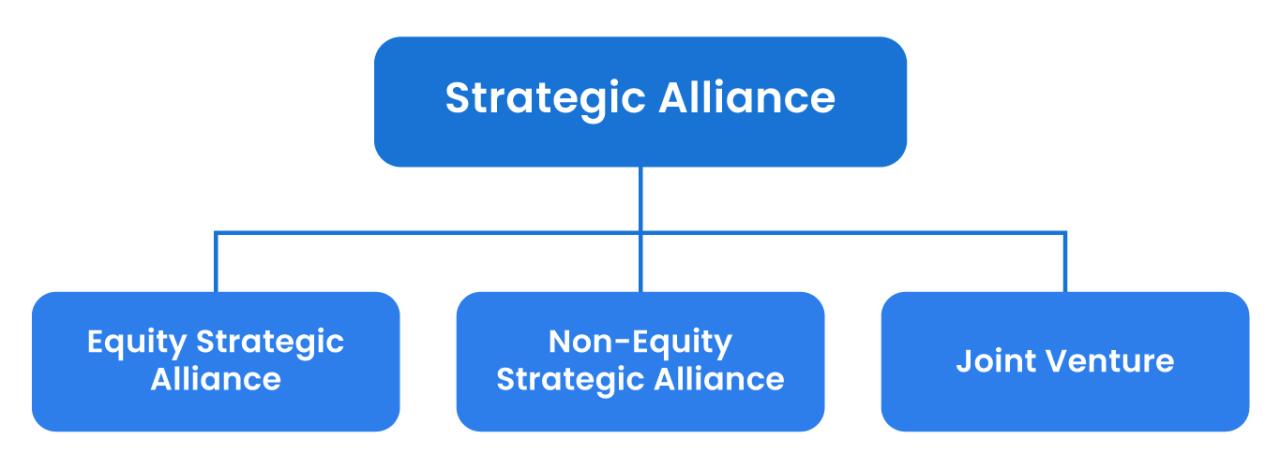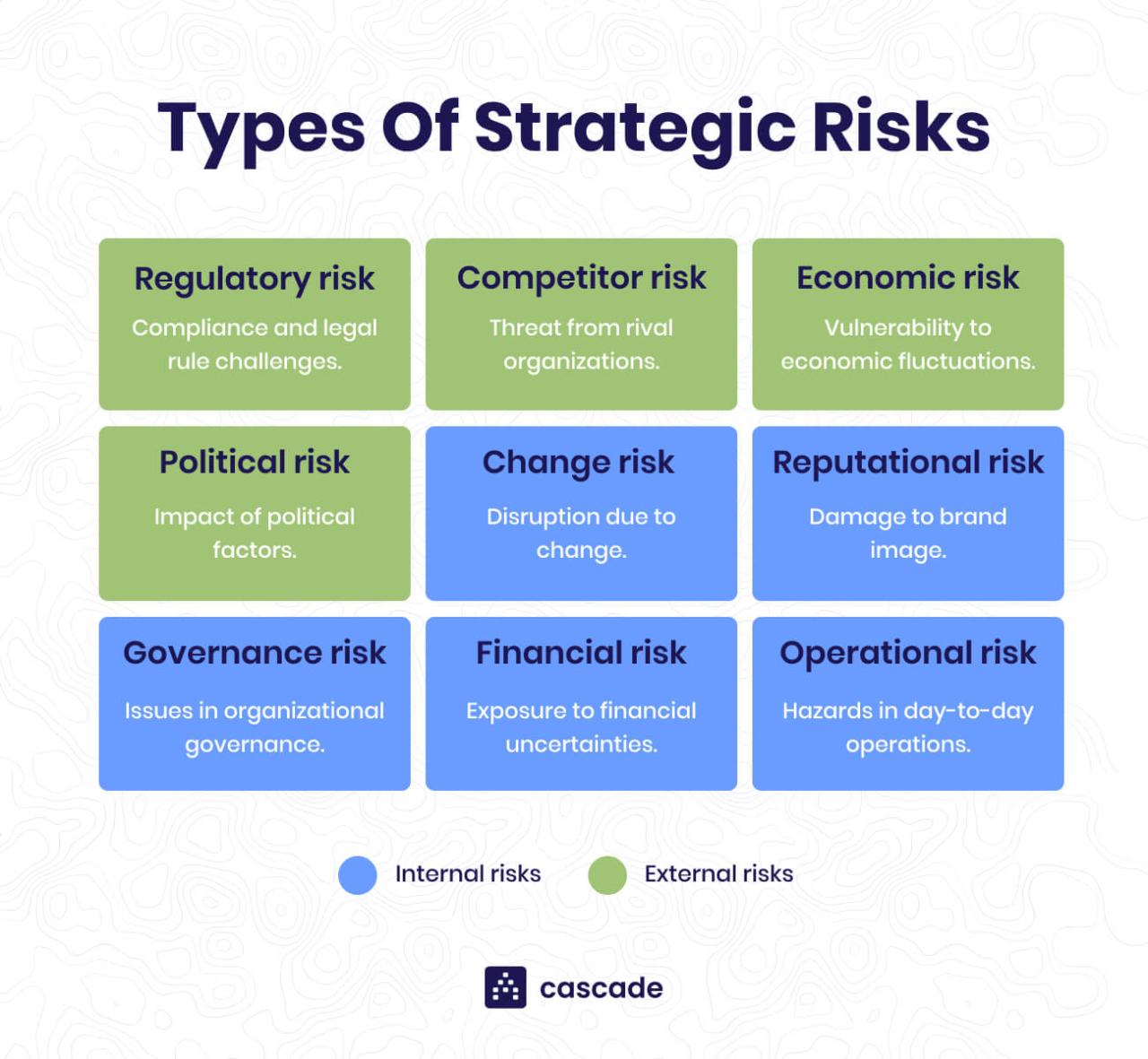Strategic Business Alliances
Strategic business alliances sets the stage for this enthralling narrative, offering readers a glimpse into a story that is rich in detail, brimming with originality, and filled with opportunities for growth and success.
As businesses navigate the intricate landscape of forming partnerships and alliances, they unlock a world of possibilities that can lead to enhanced innovation, increased market reach, and sustainable growth.
Definition of Strategic Business Alliances

Strategic business alliances refer to collaborations between two or more companies with complementary strengths and resources to achieve mutual goals. These alliances are formed to enhance competitiveness, expand market reach, share risks, and leverage each other’s expertise.
Examples of Industries with Strategic Alliances
In industries such as technology, pharmaceuticals, automotive, and airlines, strategic alliances are commonly formed. For instance, technology companies often partner to develop new products or services, while pharmaceutical companies collaborate on research and development projects to bring innovative drugs to market faster.
Benefits of Strategic Alliances in Business
- Increased market presence: By joining forces, companies can access new markets and customer segments they may not have been able to reach on their own.
- Cost savings: Sharing resources like technology, distribution channels, or marketing efforts can lead to significant cost savings for all parties involved.
- Risk mitigation: By spreading risks across multiple partners, companies can minimize the impact of market fluctuations, regulatory changes, or other uncertainties.
- Access to new capabilities: Strategic alliances allow companies to tap into the expertise, resources, and technologies of their partners, enabling them to innovate and stay competitive in the market.
Types of Strategic Business Alliances

Strategic business alliances can take various forms, each serving a specific purpose in the business world. Understanding the different types of alliances is crucial for companies looking to expand their reach and capabilities through collaboration.
Joint Ventures
Joint ventures involve two or more companies coming together to create a new entity for a specific project or business activity. This type of alliance allows the partners to share resources, risks, and rewards while maintaining separate identities.
Partnerships
Partnerships are formed when two or more companies collaborate on a long-term basis to achieve mutual goals. Unlike joint ventures, partnerships do not create a new entity but instead focus on leveraging each other’s strengths to drive growth and innovation.
Collaborations
Collaborations involve companies working together on a specific project or initiative without forming a new entity. This type of alliance is often more flexible and can range from short-term partnerships to ongoing relationships based on shared objectives.
Equity Alliances vs. Non-Equity Alliances
Equity alliances involve one company taking an ownership stake in another, usually through the purchase of shares. This type of alliance often leads to a closer relationship between the companies and allows for greater integration of operations.
Non-equity alliances, on the other hand, do not involve the exchange of ownership stakes. Instead, companies collaborate through contracts, joint ventures, or partnerships without transferring ownership. This allows for collaboration while maintaining separate identities and control over operations.
Factors Influencing Strategic Business Alliances
When considering strategic business alliances, several key factors come into play that can greatly influence the decision-making process. These factors can range from market conditions to cultural differences, all of which play a vital role in shaping the success and effectiveness of strategic alliances.
Market Conditions
Market conditions are a crucial factor that can heavily impact the formation of strategic alliances. In a dynamic and competitive market environment, companies often seek alliances to gain a competitive edge, access new markets, share resources, and reduce costs. For example, during economic downturns, companies may form alliances to weather the storm together and enhance their survival chances. Understanding market conditions is essential in determining the need and feasibility of forming strategic alliances.
Cultural Differences
Cultural differences can also significantly influence the success of strategic alliances. When companies from different cultural backgrounds come together, it is essential to navigate through potential challenges such as communication barriers, differing work styles, and conflicting values. Building trust, mutual respect, and cultural intelligence are key to overcoming these differences and fostering a collaborative partnership. Embracing diversity and leveraging each other’s strengths can lead to a more robust and resilient alliance.
Challenges in Managing Strategic Business Alliances

Managing strategic business alliances comes with its own set of challenges that can impact the success and sustainability of the partnership. These challenges need to be addressed proactively to ensure that the alliance continues to thrive and achieve its objectives.
One of the common challenges faced when managing strategic alliances is communication barriers. Misunderstandings, lack of transparency, and cultural differences can hinder effective communication between partners. To overcome these barriers, it is essential to establish clear channels of communication, encourage open dialogue, and promote a culture of trust and collaboration. Regular meetings, joint workshops, and the use of technology can also help in bridging communication gaps.
Conflicting interests can also pose a significant challenge in managing strategic alliances. Each partner may have its own priorities, goals, and strategies, which can sometimes conflict with the objectives of the alliance. It is crucial to align interests, establish common goals, and continuously communicate to ensure that all parties are working towards a shared vision. Compromise, flexibility, and a focus on mutual benefits can help in resolving conflicts and maintaining the sustainability of the alliance.
Impact of Conflicting Interests on the Sustainability of Alliances
Conflicting interests can jeopardize the sustainability of strategic business alliances by creating tension, eroding trust, and hindering progress. It is essential to address these conflicts proactively and find mutually beneficial solutions to maintain the long-term success of the partnership. Open communication, transparency, and a commitment to collaboration are key in overcoming conflicting interests and building a strong foundation for the alliance to thrive.
Best Practices for Successful Strategic Business Alliances
In the world of business, strategic alliances can be powerful tools for growth and success. However, not all alliances are created equal. To ensure the success of your strategic business alliance, it is essential to follow some best practices that will help you navigate the challenges and maximize the benefits of collaboration.
Selecting the Right Partner for a Strategic Alliance, Strategic business alliances
Before entering into a strategic alliance, it is crucial to carefully select the right partner. Look for a partner who shares your values, has complementary skills and resources, and is committed to the long-term success of the alliance. Conduct thorough research and due diligence to ensure alignment in goals and strategies.
Importance of Clear Goals and Objectives in Alliance Formation
Clear goals and objectives are the foundation of a successful strategic alliance. Define what you want to achieve through the alliance, set measurable targets, and establish a timeline for reaching milestones. Communicate these goals effectively with your partner to ensure alignment and mutual understanding.
Establishing Trust and Maintaining a Strong Relationship within an Alliance
Trust is the cornerstone of any successful business alliance. Build trust by being transparent, honest, and reliable in your interactions with your partner. Foster open communication, address conflicts proactively, and collaborate closely to overcome challenges. Continuously work on nurturing the relationship to ensure its longevity and effectiveness.
Question Bank
What are some common industries where strategic alliances are formed?
Strategic alliances are commonly formed in industries such as technology, healthcare, and finance where innovation and collaboration play a crucial role in driving success.
How do market conditions influence the decision to form strategic alliances?
Market conditions such as competition, demand trends, and regulatory changes can impact the strategic decision-making process of forming alliances to gain a competitive edge and adapt to market dynamics.
What are some key challenges faced in managing strategic alliances?
Common challenges include communication barriers, conflicting interests, and maintaining trust and alignment between partners to ensure the sustainability and success of the alliance.






